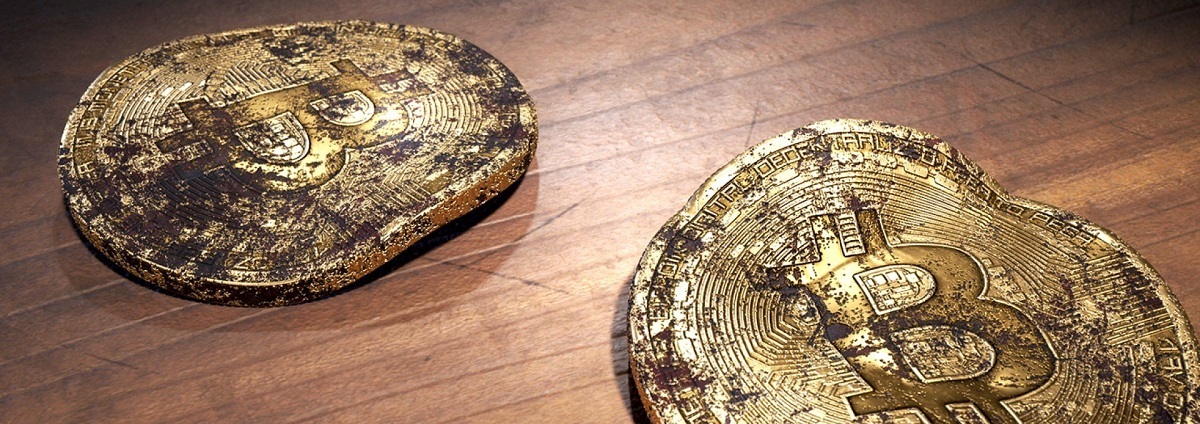Introduction
Welcome to the world of digital currencies! As technology continues to evolve, the concept of digital currencies has taken the financial world by storm. With the rise of cryptocurrencies like Bitcoin and Ethereum, more and more people are becoming interested in creating their own digital currencies. Whether you are an entrepreneur looking to revolutionize the way we conduct transactions or a programmer aiming to explore the world of blockchain, this guide will provide you with valuable insights on how to create a digital currency.
Before diving into the technical details, let’s first understand what digital currency is. Simply put, digital currency is a form of currency that exists only in electronic or digital form. Unlike traditional forms of currency, such as cash or coins, digital currencies are intangible and are typically based on cryptography technology.
The benefits of digital currencies are numerous. They offer a secure, fast, and cost-effective way to conduct transactions. Moreover, digital currencies eliminate the need for intermediaries such as banks or financial institutions, enabling peer-to-peer transactions and increasing financial inclusivity.
However, creating a digital currency is not a simple task. It requires careful planning, technical expertise, and a solid understanding of the underlying technologies. This guide aims to provide you with a step-by-step approach to create your own digital currency, taking into account essential factors such as security, decentralization, and user-friendliness.
Throughout this guide, we will explore the key considerations you should keep in mind before embarking on this journey. We will delve into the various technologies and tools that can be utilized for creating a digital currency. We will also discuss the design principles and security measures that need to be implemented to ensure a robust infrastructure. Additionally, we will explore concepts such as consensus mechanisms, user-friendly wallets, and transaction recording mechanisms.
Once the technical aspects are covered, we will explore the best practices for launching and promoting your digital currency. It is essential to not only create a functional digital currency but also gain adoption and recognition within the market. By following the guidelines outlined in this guide, you will gain the knowledge and understanding needed to create a successful and thriving digital currency.
Understanding Digital Currency
Before you embark on the journey of creating a digital currency, it is crucial to develop a solid understanding of what digital currency entails. At its core, digital currency is a type of currency that exists solely in electronic form. Unlike traditional physical currencies, such as banknotes or coins, digital currencies are intangible and exist only in digital wallets and ledgers.
One of the fundamental aspects of digital currencies is their reliance on cryptography. Cryptography, the science of securing information, plays a vital role in ensuring the security and integrity of digital currencies. Through the use of complex mathematical algorithms, cryptography enables secure and private transactions, protecting the identities and funds of the currency’s users.
Another key characteristic of digital currency is decentralization. Unlike traditional currencies that are governed by central banks or financial institutions, digital currencies operate on decentralized networks, typically based on blockchain technology. This decentralization ensures that no single entity has complete control over the currency’s transactions, making digital currencies resistant to censorship and manipulation.
A prominent example of a digital currency is Bitcoin, which was introduced in 2009 and has since gained significant popularity and acceptance worldwide. Bitcoin operates on a decentralized peer-to-peer network, where transactions are verified and recorded on a public ledger known as the blockchain. This technology ensures transparency, immutability, and security in Bitcoin transactions.
Aside from Bitcoin, there are numerous other digital currencies in existence today, each with its unique features and use cases. Some digital currencies aim to provide faster transaction speeds, while others focus on enhancing privacy or supporting smart contract functionality. It is essential to conduct thorough research and understand the different types of digital currencies before deciding on the specific characteristics of your own creation.
As the world becomes increasingly digitized, the adoption of digital currencies is on the rise. Businesses and individuals are recognizing the benefits of faster, more secure, and efficient transactions that digital currencies offer. By creating your own digital currency, you have the opportunity to contribute to this evolving landscape and potentially disrupt traditional financial systems.
However, it is essential to keep in mind that creating a successful digital currency requires careful planning and consideration. Factors such as scalability, security, and user-friendliness must be carefully addressed to ensure widespread adoption and usage. In the following sections, we will discuss in detail the factors to consider before creating a digital currency and the necessary technologies and tools to bring your vision to life.
Factors to Consider before Creating a Digital Currency
Creating a digital currency is an exciting venture, but it comes with a set of important factors that need to be considered before diving into the development process. By carefully evaluating these factors, you can increase the chances of creating a successful and sustainable digital currency. Here are some key considerations:
1. Market Demand: Assess the market demand for your digital currency. Is there a specific problem or need that your currency aims to address? Conduct thorough market research to identify potential users and understand their requirements. Analyze the competitive landscape to find opportunities for differentiation.
2. Legal and Regulatory Compliance: Familiarize yourself with the legal and regulatory frameworks that govern digital currencies in your target market. Ensure that your currency complies with all necessary regulations regarding securities, anti-money laundering (AML), know-your-customer (KYC) requirements, and consumer protection.
3. Scalability: Consider the scalability of your digital currency. As the user base grows, will the network be able to handle increased transaction volume? Look for ways to optimize the scalability of the underlying technology, such as implementing layer two solutions or exploring alternative consensus mechanisms.
4. Security: Security is paramount in the world of digital currencies. Design robust security measures to protect the funds and identities of your users. Implement encryption algorithms, multi-factor authentication, and audit trails to ensure the integrity of transactions and prevent hacking or unauthorized access.
5. User-Friendliness: Strive to create a user-friendly experience for your digital currency. Design an intuitive interface for wallets and transaction mechanisms. Simplify complex processes such as key management and address verification. Consider the needs of both novice and experienced users to ensure broad adoption.
6. Partnerships and Collaborations: Explore strategic partnerships and collaborations to enhance the ecosystem of your digital currency. Build relationships with established financial institutions, payment processors, and merchants to facilitate adoption and usability. Engage with other projects in the blockchain and digital currency space to foster innovation and knowledge exchange.
7. Economic Model: Define the economic model of your digital currency. Determine factors such as the total supply, inflation rate, transaction fees, and distribution mechanisms. Consider how your currency will maintain value and incentivize participation in the ecosystem.
8. Community Engagement: Cultivate a strong community around your digital currency. Engage with your users through social media, forums, and events. Listen to feedback and actively involve your community in the decision-making process. Encouraging community participation can foster loyalty and drive the growth of your digital currency.
9. Education and Awareness: Educate your target audience about the benefits and potential of your digital currency. Raise awareness through informative content, workshops, and partnerships with educational institutions. Empower users to understand and embrace the capabilities of digital currencies, fostering adoption and trust.
By considering these factors, you can lay a solid foundation for the successful creation of your digital currency. It is important to continuously evaluate and adapt your strategy as the digital currency landscape evolves. In the following sections, we will explore the technologies and tools required to bring your digital currency to life and the design principles that will ensure its seamless operation.
Technologies and Tools for Creating a Digital Currency
Creating a digital currency requires leveraging various technologies and tools to bring your vision to life. Understanding these technologies and selecting the appropriate tools is crucial for developing a functional and secure digital currency. Here are some key technologies and tools to consider:
1. Blockchain Technology: Blockchain is the underlying technology that powers most digital currencies. It is a decentralized and distributed ledger that records all transactions in a transparent and immutable manner. Choose a blockchain platform that suits your specific requirements, such as Ethereum, Hyperledger Fabric, or a custom-built blockchain solution.
2. Smart Contracts: Smart contracts are self-executing programs that automate the enforcement and execution of agreements or transactions. They enable the creation of decentralized applications (DApps) and offer programmable functionality to your digital currency. Solidity, the programming language used on Ethereum, is commonly used for developing smart contracts.
3. Wallet Development: A wallet is a software application that allows users to securely store, send, and receive digital currency. Consider developing user-friendly wallets for different platforms, including web, mobile, and hardware wallets. Tools like MetaMask, Trust Wallet, and Trezor can facilitate the development of wallets with robust security features.
4. Consensus Mechanisms: Consensus mechanisms are protocols that ensure agreement among network participants on the validity of transactions. Popular consensus mechanisms include Proof of Work (PoW), Proof of Stake (PoS), and Delegated Proof of Stake (DPoS). Choose a consensus mechanism that aligns with your digital currency’s goals and resource requirements.
5. Token Standards: If your digital currency involves the creation of tokens, adhere to established token standards such as ERC-20 (Ethereum) or TRC-20 (TRON). These standards provide guidelines for token functionality and interoperability, ensuring compatibility with existing infrastructure and exchanges.
6. Security Auditing: Conduct thorough security audits of your digital currency’s codebase to identify and address potential vulnerabilities. Engage professional security firms or consultants to review and assess the security of your smart contracts, wallets, and overall infrastructure.
7. Developer Tools and Documentation: Provide comprehensive developer tools and documentation to facilitate the adoption and integration of your digital currency. This includes APIs, SDKs, developer documentation, and sample code to assist developers in building DApps and integrating your currency into their platforms.
8. Network and Infrastructure Setup: Set up the necessary network infrastructure to support your digital currency’s operation. This includes nodes, servers, and network connectivity. Consider whether your digital currency will be hosted on public or private networks, and ensure proper security and redundancy measures are in place.
9. Testing Frameworks: Implement robust testing frameworks to ensure the reliability and functionality of your digital currency. Conduct thorough unit testing, integration testing, and stress testing to identify and resolve any issues before deploying your currency to the live network.
10. Continuous Integration and Deployment: Set up continuous integration and deployment pipelines to facilitate the iterative development and deployment of updates and enhancements to your digital currency. This helps maintain the integrity and security of your currency while allowing for ongoing improvements.
By leveraging these technologies and tools, you can create a solid foundation for your digital currency and ensure the seamless operation of its underlying infrastructure. However, it is important to stay up-to-date with emerging technologies and industry best practices, as the landscape of digital currencies continues to evolve. In the following sections, we will delve into the design principles and security measures necessary for building a successful digital currency.
Designing the Digital Currency Infrastructure
The design of your digital currency’s infrastructure is a critical step in ensuring its stability, security, and scalability. By carefully planning and implementing the right components, you can create a robust foundation for your currency’s operations. Here are key considerations when designing the digital currency infrastructure:
1. Layered Architecture: Implement a layered architecture to separate the different components of your digital currency. This helps create modular and scalable systems, making it easier to update or replace individual components without disrupting the entire system. Common layers include the application layer, consensus layer, and data layer.
2. Network Connectivity: Ensure reliable network connectivity to facilitate the communication and synchronization of nodes within your digital currency’s network. It is crucial to design a network architecture that can handle high transaction volumes and minimize latency. Consider using a combination of physical servers and cloud-based solutions to achieve optimal connectivity.
3. Node Configuration: Configure your network nodes with the appropriate hardware and software specifications. This includes selecting powerful servers or cloud instances to handle the computational requirements of validating and processing transactions. Determine the number of nodes needed for a secure and decentralized network.
4. Data Structure and Storage: Choose an appropriate data structure for storing transactions and other relevant data. Depending on your digital currency’s requirements, you may opt for a simple data structure like a Merkle tree or a more complex structure such as a Directed Acyclic Graph (DAG). Implement efficient storage mechanisms to optimize performance and data retrieval.
5. Integration with Existing Systems: Consider the potential integration of your digital currency with existing financial and technological systems. Explore partnerships and APIs that allow for seamless integration with payment processors, exchanges, or other financial institutions. This integration increases usability and adoption of your currency.
6. Interoperability: Strive for interoperability of your digital currency with other blockchain networks and cryptocurrencies. Research and implement interoperability protocols, such as atomic swaps or cross-chain communication technologies, to enable seamless transfer of assets between different networks and enhance liquidity.
7. Monitoring and Analytics: Implement robust monitoring and analytics tools to track the performance, usage, and security of your currency. Monitor network nodes, transaction activity, and user engagement to identify any anomalies or potential security threats. Analyze data to identify patterns, improve system performance, and gain insights into user behavior.
8. Documentation and APIs: Provide comprehensive documentation and well-defined APIs for developers and users to interact with your digital currency. Clear documentation facilitates integration with third-party applications and fosters the development of a vibrant ecosystem around your currency.
9. Continuous Improvement and Upgrades: Plan for regular upgrades and improvements to your digital currency’s infrastructure. Stay informed about industry developments and technological advancements to ensure your infrastructure remains secure and up-to-date. Regularly assess and update software dependencies to mitigate any vulnerabilities.
By carefully considering and implementing these design principles, you can create a scalable, secure, and efficient infrastructure for your digital currency. Remember to continuously evaluate and adapt the infrastructure as your currency evolves and user demands change. In the following sections, we will explore the important topic of implementing security measures to protect your digital currency and its users.
Implementing Security Measures
Implementing robust security measures is essential to ensure the integrity and protection of your digital currency and its users. As the rise in cyber threats continues, it is crucial to prioritize security throughout the development and operation of your currency. Here are key security measures to consider:
1. Secure Coding Practices: Adhere to secure coding practices when developing your digital currency’s software. Follow industry-standard guidelines and frameworks, such as the Open Web Application Security Project (OWASP) Top Ten, to prevent common vulnerabilities such as SQL injection, cross-site scripting, and buffer overflows.
2. Encryption: Employ strong encryption algorithms to protect sensitive data in transit and at rest. Utilize industry-standard protocols, such as HTTPS for web communications and AES-256 for data encryption, to ensure the confidentiality and integrity of data exchanged within your digital currency’s ecosystem.
3. Multi-Factor Authentication (MFA): Implement multi-factor authentication mechanisms to secure user accounts and prevent unauthorized access. Require users to provide multiple forms of verification, such as a password and a one-time password sent via SMS or email, to enhance the security of their wallets and transactions.
4. Key Management: Implement robust key management practices to safeguard private keys and digital signatures. Utilize hardware security modules (HSMs) or secure enclaves to store keys securely. Consider implementing multi-signature wallets to distribute trust and enhance security through shared ownership of funds.
5. Audit Trails: Implement audit trails to monitor and track user activities and system events. Log and review critical activities, such as account creation, authentication attempts, and transaction approvals, to detect and respond to any security breaches or suspicious behavior promptly.
6. Regular Security Audits: Perform regular security audits of your digital currency’s codebase and infrastructure. Engage external security firms or consultants to conduct comprehensive penetration testing and vulnerability assessments to identify potential weaknesses and address them before they can be exploited.
7. Incident Response Planning: Develop a comprehensive incident response plan to handle potential security incidents. Define the procedures for identifying, containing, and recovering from security breaches. Regularly test and update the incident response plan to ensure its effectiveness and alignment with evolving threats.
8. Security Awareness and Education: Educate users about security best practices and common attack vectors to empower them to protect themselves. Provide educational resources, tutorials, and guidelines to help users navigate the secure usage of your digital currency. Regularly communicate security updates and reminders to the user community.
9. Third-Party Integrations: Ensure that any third-party integrations, such as payment processors or exchanges, comply with industry-standard security practices. Conduct due diligence to evaluate the security posture of these integrations and assess potential risks to your digital currency’s ecosystem.
10. Community Engagement: Involve the digital currency community in identifying and reporting security vulnerabilities. Establish bug bounty programs or security-focused forums to encourage the community to actively participate in improving the security of your currency. Rewards for responsible disclosure can incentivize individuals to report vulnerabilities instead of exploiting them.
By implementing these security measures, you can reduce the risk of security breaches and protect the funds and identities of your digital currency’s users. However, it is important to stay updated with the latest security trends and continuously adapt your security measures to address emerging threats. In the next section, we will explore the importance of building a decentralized system for your digital currency.
Building a Decentralized System
Building a decentralized system is a fundamental aspect of creating a digital currency. By leveraging the principles of decentralization, you can enhance security, eliminate single points of failure, and foster trust within your digital currency’s ecosystem. Here are key considerations when building a decentralized system:
1. Distributed Ledger: Implement a distributed ledger, such as a blockchain, to record and validate transactions across multiple nodes. This ensures that no single entity has complete control over the currency’s transactions and prevents tampering or manipulation of data. Choose a consensus mechanism that aligns with your decentralization goals, such as Proof of Stake (PoS) or Delegated Proof of Stake (DPoS).
2. Node Network: Establish a network of nodes that participate in the validation and verification of transactions. Encourage individuals to run nodes by incentivizing them with rewards or governance rights. A diverse and decentralized node network improves the security and resilience of your digital currency’s infrastructure.
3. Decentralized Governance: Implement a governance model that allows participants to have a say in the decision-making process of your digital currency. Utilize mechanisms such as consensus-based voting or liquid democracy to ensure that decisions are made collectively and fairly.
4. Permissionless Participation: Enable permissionless participation in your digital currency’s network, allowing anyone to join and interact with the system without requiring explicit approval or permission. This ensures inclusivity and fosters a vibrant ecosystem.
5. Trustless Transactions: Design your system to facilitate trustless transactions, where participants can engage in transactions without having to trust each other explicitly. Utilize cryptographic protocols and smart contracts to enforce transparency, immutability, and security in the transaction process.
6. Data Redundancy: Ensure redundancy of data across multiple nodes in the network to prevent data loss or manipulation. By distributing data across the network, you can enhance the resilience and availability of your digital currency’s data.
7. Interoperability: Explore interoperability with other blockchain networks and digital currencies to promote seamless transfer of assets and enhance the overall usability of your currency. Implement protocols such as Atomic Swaps or cross-chain communication to enable interoperability.
8. Open Source Development: Embrace open source development principles by making your digital currency’s codebase and technical documentation publicly accessible. This encourages transparency, fosters collaboration, and allows for peer review of your system’s security and functionality.
9. Network Consensus: Ensure that the consensus mechanism of your digital currency is resilient against attacks and provides equitable decision-making power to network participants. Conduct thorough testing and analysis of the consensus algorithm to identify and address any vulnerabilities.
10. Community Engagement: Actively engage with your digital currency’s community, involving them in the decision-making process and encouraging their participation. Empower community members to contribute to the development, governance, and security of your decentralized system.
By building a decentralized system, you create a more secure, transparent, and resilient infrastructure for your digital currency. Decentralization mitigates the risks associated with centralized control and fosters trust among participants. However, it is important to strike a balance between decentralization and scalability, as the performance of the network can be affected by an excessive number of nodes or high transaction volume. In the next section, we will explore the importance of selecting the right consensus mechanism for your digital currency.
Choosing a Consensus Mechanism
Choosing the right consensus mechanism is a critical decision when creating a digital currency. The consensus mechanism ensures that all participants in the network agree on the validity of transactions and the order in which they are added to the blockchain. Here are key factors to consider when choosing a consensus mechanism:
1. Security: Assess the security provided by the consensus mechanism. Look for mechanisms that are resistant to attacks, such as Sybil attacks or 51% attacks. Consider the level of computational power or stake required to compromise the network and the availability of incentives for participants to behave honestly.
2. Scalability: Evaluate the scalability of the consensus mechanism. How does it handle an increasing number of participants and a growing volume of transactions? Consider mechanisms that can process transactions quickly and maintain high throughput, such as Proof of Stake (PoS) or Delegated Proof of Stake (DPoS).
3. Decentralization: Consider the level of decentralization provided by the consensus mechanism. Does it promote equal participation and decision-making among network participants? Look for mechanisms that distribute influence and governance rights to a wide range of participants, preventing concentration of power.
4. Economic Model: Examine the economic incentives and rewards provided by the consensus mechanism. Are participants incentivized to act in the best interests of the network? Choose a mechanism that aligns with your digital currency’s economic model and ensures fair rewards for network participants.
5. Energy Efficiency: Assess the energy efficiency of the consensus mechanism. Traditional proof-of-work mechanisms, like those used in Bitcoin, consume significant amounts of energy. Consider alternative mechanisms, such as Proof of Stake (PoS), that require less energy for validating transactions.
6. Fork Resistance: Evaluate the resistance of the consensus mechanism to forks or chain splits. Does it have mechanisms in place to handle disagreements among participants and ensure a single, coherent blockchain? Look for mechanisms that have well-defined rules and protocols for resolving conflicts.
7. Compatibility: Consider the compatibility of the consensus mechanism with your chosen blockchain platform or existing infrastructure. Ensure that the mechanism can be integrated seamlessly and operates efficiently with the rest of your digital currency’s ecosystem.
8. Community Acceptance: Take into account the acceptance and trust in the consensus mechanism within the broader blockchain community. Consider mechanisms that are well-established, widely used, and have a track record of successful operation.
9. Flexibility: Evaluate the flexibility of the consensus mechanism to accommodate potential future changes or upgrades. Choose mechanisms that can adapt to evolving technology trends and resolve any scalability or security challenges that may arise.
10. Ease of Implementation: Consider the ease of implementation and maintenance of the chosen consensus mechanism. Evaluate the availability of developer resources, documentation, and community support to ensure a smooth integration into your digital currency’s infrastructure.
By carefully considering these factors and evaluating the trade-offs associated with each consensus mechanism, you can select the most suitable mechanism for your digital currency. Remember that there is no one-size-fits-all consensus mechanism, and the choice will depend on the specific goals and requirements of your digital currency. In the next section, we will explore the importance of building a user-friendly wallet for your currency’s users.
Building a User-Friendly Wallet
Building a user-friendly wallet is crucial for the adoption and success of your digital currency. A wallet is the interface through which users interact with and manage their digital currency holdings. Here are key considerations when building a user-friendly wallet:
1. Intuitive User Interface: Design a user interface that is intuitive and easy to navigate. Consider the needs and preferences of your target user base. Use clear icons, labels, and menus to guide users through the wallet’s functionalities.
2. Simple Account Setup: Make the process of creating a wallet account simple and straightforward. Minimize the number of steps and the amount of information required for account creation. Offer clear instructions and visual cues to assist users in setting up their accounts.
3. Secure Wallet Storage: Provide secure storage for wallet data, including private keys and user credentials. Utilize industry-standard encryption techniques and secure storage mechanisms to protect user information. Consider offering hardware wallet integration for enhanced security.
4. Transaction Management: Simplify the process of sending and receiving digital currency within the wallet. Include features such as QR code scanning, auto-fill recipient addresses, and transaction history tracking. Provide clear and user-friendly transaction confirmation prompts to ensure accuracy.
5. Multi-Currency Support: If your digital currency supports multiple cryptocurrencies, design the wallet to accommodate different currencies. Allow users to easily switch between different currency balances and provide real-time conversion rates for convenience.
6. Backup and Recovery: Implement robust backup and recovery features to protect users from losing access to their funds. Offer options for wallet backup, such as mnemonic phrases or encrypted backups, and provide clear instructions on how to restore wallets in case of device loss or failure.
7. Integration with Popular Platforms: Integrate your wallet with popular platforms and services to enhance usability and convenience. Consider integrations with third-party payment gateways, e-commerce platforms, or cryptocurrency exchanges to enable seamless transactions and fund management.
8. Customer Support: Offer prompt and responsive customer support to assist users with any issues they encounter. Provide multiple channels of communication, such as email, live chat, or community forums, and ensure knowledgeable support personnel are available to address user inquiries.
9. Regular Updates and Enhancements: Continuously update and enhance the wallet based on user feedback and evolving industry standards. Address security vulnerabilities promptly by releasing timely patches and upgrades. Regularly add new features and optimize the wallet’s performance to meet user expectations.
10. Educational Resources: Provide educational resources within the wallet interface to help users understand the functionality and benefits of your digital currency. Offer tutorials, FAQs, and links to external resources that empower users to make the most of their wallet and digital currency experience.
By prioritizing user experience and implementing these key features, you can create a user-friendly wallet that caters to the needs and expectations of your digital currency’s users. Remember to continuously seek user feedback and iterate on the wallet’s design to ensure ongoing improvement and customer satisfaction. In the next section, we will explore the implementation of transactions and recording mechanisms for your digital currency.
Implementing Transactions and Recording Mechanisms
Implementing robust and efficient transactional and recording mechanisms is essential for the successful operation of your digital currency. These mechanisms ensure the accurate recording and secure processing of transactions within the currency’s ecosystem. Here are key considerations when implementing transactions and recording mechanisms:
1. Transaction Validation: Design a mechanism for validating and verifying transactions to ensure their accuracy and integrity. Implement cryptographic protocols, such as digital signatures, to authenticate the parties involved in the transaction and prevent unauthorized tampering.
2. Transaction Processing: Develop a system for efficiently processing transactions within your digital currency’s network. Consider factors such as transaction fees, prioritization, and confirmation times to optimize the speed and reliability of transaction processing. Strive for low latency and high throughput to accommodate a growing number of transactions.
3. Transaction Privacy: Address the privacy concerns of your digital currency’s users by implementing privacy features. Depending on the requirements of your currency, consider incorporating techniques such as ring signatures, zero-knowledge proofs, or off-chain transactions to protect the privacy of transactional data.
4. Transaction History: Maintain a comprehensive and transparent transaction history within your digital currency’s ecosystem. Implement a publicly accessible ledger, such as a blockchain, that records all transactions in a secure and immutable manner. Ensure that the transaction history is easily searchable and can provide transaction details to users when needed.
5. Transaction Fees: Determine the transaction fee structure and incentivization mechanisms for your digital currency. Consider factors such as transaction size, resource usage, and network congestion when calculating appropriate fees. Balance the need for fair compensation for network validators with the desire to keep transaction costs reasonable for users.
6. Address Management: Develop intuitive mechanisms for address generation and management within the digital currency’s wallet. Allow users to create and manage multiple addresses for different purposes, such as receiving funds or segregating transactions. Provide clear instructions and tools to help users manage their addresses securely and conveniently.
7. Confirmation and Timestamping: Implement a mechanism for confirming and timestamping transactions to ensure their inclusion in the digital currency’s ledger. Consider the requirements for achieving consensus and the number of confirmations required to consider a transaction fully validated and irreversible.
8. Transaction Reversibility: Determine the level of transaction reversibility within your digital currency. Some currencies may require transactions to be irreversible to prevent fraud or double-spending, while others might allow for reversible transactions under specific conditions. Define clear guidelines and rules for transaction reversibility.
9. Transaction Notifications: Offer transaction notifications and alerts to users to keep them informed about the status of their transactions. Send notifications through email, SMS, or push notifications to provide timely updates on transaction confirmations, successful transfers, or any issues encountered during the transaction process.
10. Transaction Compliance: Ensure compliance with legal and regulatory requirements related to transactions. Familiarize yourself with relevant laws, such as anti-money laundering (AML) and know-your-customer (KYC) regulations, and implement the necessary mechanisms to enforce compliance within your digital currency’s ecosystem.
By implementing robust and efficient transactional and recording mechanisms, you can facilitate secure and reliable transactions within your digital currency’s ecosystem. Continuously monitor and optimize these mechanisms to ensure speed, scalability, privacy, and compliance as your currency evolves and grows. In the next section, we will explore the important steps in launching and promoting your digital currency.
Launching and Promoting the Digital Currency
Launching and promoting your digital currency is a crucial step in gaining adoption and establishing its presence within the market. A well-executed launch strategy and effective promotional efforts can attract users, investors, and partners to your currency. Here are key steps to consider when launching and promoting your digital currency:
1. Develop a Launch Plan: Create a detailed plan outlining the steps, milestones, and timelines for your currency’s launch. Consider factors such as network readiness, wallet availability, and regulatory compliance. Define the target audience and determine the unique selling propositions that differentiate your currency from others in the market.
2. Build a Solid Brand: Establish a strong brand identity for your currency. Develop a compelling logo, tagline, and visual identity that resonate with the target audience. Use consistent branding across all communication channels and materials to build recognition and trust in your currency.
3. Engage the Community: Foster a vibrant and engaged community around your digital currency. Utilize social media platforms, forums, and community events to connect with users, investors, and enthusiasts. Encourage community participation, address questions, and provide regular updates to keep the excitement and momentum going.
4. Develop Educational Resources: Educate the target audience about the benefits and functionality of your digital currency. Produce informative blog posts, videos, tutorials, and FAQs to help users understand and navigate your currency’s ecosystem. Offer educational resources that cater to different levels of understanding, from beginners to advanced users.
5. Establish Strategic Partnerships: Collaborate with businesses, organizations, and influencers in the cryptocurrency space to expand your reach and credibility. Seek partnerships with payment processors, exchanges, or merchants that can integrate or accept your digital currency. Leverage the networks and expertise of your partners to promote and drive adoption of your currency.
6. Launch Marketing Campaigns: Develop targeted marketing campaigns to create awareness and generate interest in your digital currency. Utilize online and offline channels to reach your audience, including social media advertising, content marketing, press releases, and events. Tailor your campaigns to highlight the unique features and benefits of your currency.
7. Provide Incentives: Offer incentives to early adopters, such as airdrops, referral programs, or exclusive access to features or benefits. Incentives can attract users to try your currency and encourage them to become advocates and ambassadors for its adoption.
8. Engage with Media and Influencers: Seek media coverage and engage with cryptocurrency influencers and thought leaders to amplify your currency’s reach. Share your story, highlight the value proposition of your currency, and showcase real-world use cases to attract attention and gain credibility.
9. List on Exchanges: Secure listings on reputable cryptocurrency exchanges to increase liquidity and accessibility of your currency. Work closely with exchange partners to ensure a smooth listing process and provide necessary documentation and integration support.
10. Monitor and Adapt: Continuously monitor the market, user feedback, and industry trends to adapt your promotional strategies accordingly. Analyze the effectiveness of your marketing campaigns, track user acquisition and engagement metrics, and iterate on your promotional efforts to optimize results.
By effectively launching and promoting your digital currency, you can increase awareness, attract users, and foster adoption within the market. Remember to listen to user feedback, engage with the community, and continually refine your marketing strategies to drive the growth and success of your digital currency.
Conclusion
Congratulations! You have now learned key steps and considerations for creating and launching your own digital currency. From understanding the concept of digital currencies to designing a user-friendly wallet and implementing robust security measures, you have gained valuable insights into the intricacies of this exciting field.
Creating a digital currency requires careful planning, technical expertise, and a deep understanding of the principles of decentralization, security, and usability. By leveraging technologies such as blockchain, smart contracts, and secure wallets, you can build a digital currency that offers secure, transparent, and efficient transactions.
Remember to continuously evaluate and adapt your digital currency as the landscape and user demands evolve. Stay informed about emerging technologies, regulatory requirements, and market trends. Engage with the community and partners to foster adoption and build a vibrant ecosystem around your currency.
Launching and promoting your digital currency is as vital as its development. Develop a comprehensive launch plan, build a strong brand, engage with the community, and implement targeted marketing campaigns to attract users and stakeholders. Establish strategic partnerships, secure listings on exchanges, and consistently provide educational resources to drive adoption and growth.
Throughout this process, prioritize security, scalability, and user experience. Implement robust security measures to protect user funds and data, ensure scalability to handle a growing user base, and design user-friendly interfaces that make interacting with your currency a seamless experience.
Creating and launching a digital currency is an exciting journey that requires dedication and adaptability. Embrace the challenges and learn from the experiences along the way. The digital currency landscape continues to evolve, presenting new opportunities and possibilities. By staying innovative, collaborative, and committed to providing value, you can create and establish a successful digital currency.

























